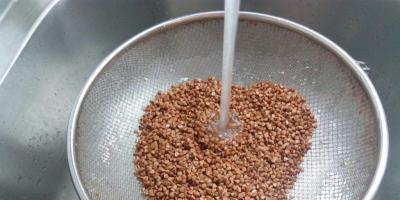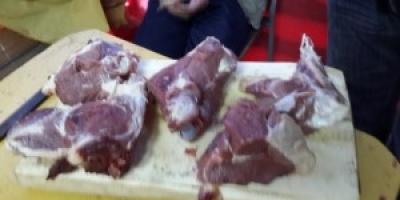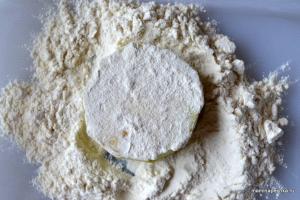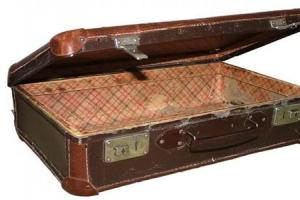How unpredictable and ornate are the paths that lead us to life’s milestones! So my interest in the Shakuhachi flute came quite unexpectedly. What is even more unexpected (for myself) is what I want to offer you on this page. Namely, making a flute with your own hands from PVC. The Shakuhachi type flute is a fairly simple instrument, structurally speaking. If it could be made hundreds of years ago, now, having modern materials and tools, as well as means for calculations, anyone who sets such a goal can make a flute.
A PVC flute has a pleasant, deep, thoughtful, fairly strong sound (subject to all the recommendations outlined on this page). The nature of the timbre of PVC is of course different from babuk, it is no worse or better, it is just different. But for beginners, as well as for those who want to experiment with scales and keys, this is an excellent opportunity to realize their creative impulses. Besides everything, as has already been written a lot in other materials on PVC flutes, they are unpretentious to conditions environment and can be a constant companion wherever you go. From my own experience, I can say that making a flute is no less enjoyable than actually playing it. This is already a game, this is already a sound, a melody of inspiration, aspiration realized in such a wonderful instrument as the Shakuhachi type flute.
Start
Having received my first flute (bamboo) in the key of F (Shakuhachi 1.5), I thought that this was not quite what I expected. It turned out that I ordered a flute before I figured out their sizes and tonalities. Oh, these sudden impulses of the soul!!! Well, okay, let's leave the lyrics for later. So, ordering a new flute was financially expensive, but I still wanted something more meditative. Thanks to Evgeniy's materials (), I became interested in the possibility of making a flute from a simple PVC pipe. “What, it’s inexpensive, accessible, you can experiment, it’s enough for the first time, and then, lo and behold, I’ll be able to buy a bamboo flute.” That's what I thought.
Practice?
Having purchased everything necessary, I proceeded to... What? For thoughts.
The fact is that the recommended flute sizes and hole locations varied greatly depending on the source. I am still more of a supporter of the European system of notes, and therefore the accuracy of sound, and therefore the accuracy of the size of the flute, is an important issue for me. This was especially felt after the first attempt (I still tried to use the recommended sizes) in the process of tuning the flute by cutting holes. I clearly noticed correlations between the holes, while I was adjusting one hole, the other immediately floated in tone, a little, but it floated. Bending the flute, of course, evened out the deviations of the notes, but all this seemed inconvenient.
Theory
If you want to do something, do it yourself.
I started by finding out about the resonance properties of air column oscillations. It turned out that the frequency of oscillations of the air column in a pipe open on both sides is equal to: the speed of sound divided by the length and divided by 2, and for closed pipe on one side divided by 4.
Having cut out a piece of pipe corresponding to the calculations and turned it out, I discovered that I had not hit the right note. The Shakuhachi flute is not twofold open pipe and is not closed on one side! She is something “in the middle”. Empirically, it was possible to calculate the division coefficient; it is equal to 2.20031. Now my trumpets sounded exactly on the right note. But what to do with the holes?
Having calculated the holes according to the required frequencies (notes), it turned out that something was clearly wrong. It became clear that the position of the holes needed to be calculated differently, taking into account their diameter and, possibly, the thickness of the pipe wall. After all, the hole also forms a small pipe. I’ll omit the tedious descriptions of my ordeals in this field, although they really captivated me and were about to threaten to give birth to a “eureka”... The materials helped again, to whom I am very grateful!
Now it's practice
Pipe
In a plumbing store I came across a pipe with an internal diameter of 21 and a wall thickness of 5.4. It allows you to immediately grind utaguchi without additional, thickening attachments, which has a very positive effect on the aesthetic appearance of the flute.

Flute "2.9" in the key of F (F) with standard Minie tuning. Pipe 22.5 internal diameter, 6.7 wall thickness. The sound is deep and quite loud. The holes are located in places convenient for spreading. Grooves were made for the holes to reduce the wall thickness. Sound sample

Happy making and happy playing!!!
A self-made flute is a wonderful gift! She will give you many minutes filled with enthusiasm in attempts to blow out the sound! Especially when the subject heard and saw how they had just played it, and how wonderfully it sings, and how easy everything looks!!! ;-) I have already given away almost all the flutes, except those that I play myself, and the number of people who want them is not decreasing. Go for it!!!
Gift copies
From left to right:
1. Flute "1.8" key D(Re) with standard Minie tuning; Sound sample
2. Flute “2.0” in the key of C (C) with standard Minie tuning.
A truly ideal material for making musical wind instruments is bamboo. Firstly, it is hollow inside, and the stem has partitions, so there will be no need to make an additional plug. Secondly, bamboo does not need additional drying. And real craftsmen even create saxophones and flutes from bamboo. The most common bamboo flute can be created with your own hands.
First you need to choose a suitable bamboo stem. It can be grown very quickly in the country or even on an ordinary windowsill. Alternatively, an old bamboo fishing rod or part of a curtain will work if it is made from stems of sufficient length. The diameter of the bamboo should be from 2 to 2.5 cm. But nothing bad will happen if the tool turns out to be a little thicker or thinner.
Using a jigsaw with a fine file, cut a piece of bamboo about half a meter long. You need to saw off so that there is a natural plug at one end of the flute.
Mark the first, injection hole, for which from the end on which the plug is located, measure 2.5 cm using a ruler. It will be convenient to make marks with a regular marker. From the first mark made, measure another 15-20 cm along the same side, making a second mark. Stepping back 2.5 cm from the second mark again, place a third mark. Make 4 more exactly the same marks. If you did everything correctly, you will end up with 4 marks.
Next, you need to get rid of unnecessary natural partitions. Most likely, there will be 2-3 of them. But you need one, only the one that covers the end of the tool. You can get rid of them using a heated steel rod. With its help, excess fibrous plugs are burned out. First you need to heat the rod either gas burner, or on a fire until red hot. At the same time, hold the other end of the rod with a potholder, for example, using an oven mitt.
The next step in creating a flute is drilling the holes. It is best to do this with a drill with a diameter slightly larger than 0.6 cm. You should not use an electric drill for this, otherwise cracks will appear on the bamboo. Can be applied hand drill, but the knob must be turned slowly and with care. The drill needs to be red hot.
Of course, a potholder won't help here, so it's better to use pliers.
And one last point. Wrap fine sandpaper, such as a knitting or bicycle needle, and sand the inside of the flute.
How to make a flute from bamboo
http://site/assets/modules/svensoft-social-share-buttons/images/placeholder.png
A truly ideal material for making musical wind instruments is bamboo. Firstly, it is hollow inside, and the stem has partitions, so there will be no need to make an additional plug. Secondly, bamboo does not need additional drying. And real craftsmen even create saxophones and flutes from bamboo. The most common bamboo flute can be created with your own hands. First you need to choose [...]
Guest - 2017-03-04 23:06
Not only do the instruments fail to build, but even with skill, it is difficult to intonate due to the very poor quality of processing of the labium hole. But a whistle will do for a child if you are not going to send your child to music school. Otherwise it will ruin your hearing
Thank you so much for this
TA-MUSICA - 2013-06-26 20:09
Thank you so much for such a detailed review! We are sure that it will be useful to many who are interested in transverse flutes. Unfortunately, we do not know any traditional name for this instrument, and the manufacturer does not use a word other than just “flute.”
Bamboo flute
Guest - 2013-06-26 19:24
When this bamboo flute caught my eye, I was looking through the Internet pages in search of a simple cross flute at a reasonable price. I'm an amateur. I’m also a beginner, and I was looking for the simplest transverse flute for myself in order to learn how to extract sounds from it. The usual choice for a beginner would be a Yamaha Fife, but in Izhevsk you can hardly find it, and for some reason there were no people willing to bring it, even for an advance payment. What was available from homemade wooden transverse flutes looked dubious and cost unreasonably much. Since I was unable to extract even one sound from them, I was afraid to take them. The “simple, inexpensive, and transverse” option that I saw here completely suited me.
Well, first the good things:
1. The flute sounds pleasant, and it turned out to be quite easy to extract sound from it, and not a bad hiss and whistle. Three hours of diligent whistling and hissing, and I was able to do it consistently.
2. It looks good and is pleasant to the touch. Whatever one may say, bamboo is wood, not plastic. And it smells good) Light and neat. This is if you are not a fan of inlays and various decorative elements. But, if you need decor and a beautiful souvenir item, then this pipe will not interest you.
Now some criticism:
1. In principle, looking at the price of the product, I soberly assessed the possible flaws of the tool. The outer part of the flute was sanded and even varnished, but the internal “finishing” let us down. Having drilled the channels of the holes, the manufacturer did not bother to smooth out the consequences of their drilling, which remained sticking out like a fringe in the flute channel. As a result, until I discovered and corrected this (fine sandpaper + knitting needle), it was difficult to get an even sound. The slightest movement of the hand and again only a wheezing or rattling sound was heard.
2. The flute is supplied without fingerings. This is not a terrible drawback (everything can be found on the Internet!), but still.
3. I would like to know if this type of cross bamboo pipe has a traditional name? This would greatly facilitate the search for point 2)
What can we say in general:
This is a good option for those who have never dealt with a transverse flute before, and do not want to shell out extra money for an expensive and unknown instrument, because they are not sure that this is a hobby “for the long haul.” This is an opportunity to get acquainted with the basics, that very first step, and for a very symbolic price.
So, I'm happy with the tool. Thank you)
Best regards, Evgenia.
On the contrary, its quality is very
Impossiblewolf - 2013-03-29 22:20
On the contrary, its quality is very good when it comes to sound. But its processing leaves much to be desired. or not want anything at all. A simple modification, consisting of varnishing the internal channel of the flute and/or applying winding in 3 or 4 places, can easily extend its life from half an hour to several years. Alas, I realized the need for improvement, already looking at the wide gap.
Making a panflute is quite complicated, but don't let that scare you away. We will help you with this with our advice.
The first problem you immediately encounter is the material. Exclusive tools are made from bamboo and are very expensive because the bamboo is of high quality. It is extremely difficult to choose bamboo tubes that taper evenly and are absolutely round. It’s easier in this regard with wood - it just needs to be properly processed. As for plastic, an unpleasant problem arises here - pipes of only a strictly defined diameter are offered for sale. Ideally, each panflute tube should be individual in size - this is the uniqueness of this instrument.
Here are some tips for making wooden panflutes:
Clay panflute
If desired, you can make a panflute from clay. Let us present to your attention several options for making the tool:- A flute is made from a piece of thick clay. Then, using a stick, holes are made in it. This method is simple, but is only suitable for very small and “tall” instruments.
- First, a set of sticks is made. They must match the shape internal surfaces channels in a panflute. These sticks are most often made from wax. Then the sticks are secured by the tips that are not covered with wax. Next, this structure is covered with clay, that is, the panflute itself is made around the holes already assembled together. When fired, the wax melts and flows out of the clay.
- We wrap a steep clay batch around a separate stick. Then we press the clay-wrapped tubes against each other and fire them. It turns out to be a flute.
- Prepare very liquid clay. Individual sticks are made, then these tubes are dipped into clay. You need to dip it several times. As a result, layer by layer, the required thickness is gained and the panflute is ready.
Here are the basic methods of making a panflute that are known among amateurs and, we hope, will be useful to you too. Good luck!
Materials:
- Gas torch or fire for heating the metal rod;
- Steel rod with a minimum diameter of 12 mm;
- Tack or heavy cloth;
- Hacksaw for metal with fine teeth;
- Marker;
- A sheet of fine-grit sandpaper;
- Old drill with a diameter of 6mm;
- Pliers;
- Old bamboo fishing rod;
- Roulette;
- Linseed oil and a rag.
Instructions:
Cut a piece of bamboo at least 45-50cm long and 20-25mm in diameter from the bottom of the old bamboo fishing rod. Be sure to cut it so that one end is covered by the partition between the sections. (see picture) 
Measure and mark a space 25mm at the end of the closed part of the bamboo. Measure a distance of 150mm from the first mark and make five more marks with indents of 25mm. When finished, you should have a total of seven marks. (see picture)

In the next step, you need to use a 12 mm rod to burn through the unnecessary partitions and clean out the unwanted fibers from the bamboo flute. To do this, heat one end of the steel rod until it turns red. *WARNING* - be sure to use a pot holder or heavy cloth when holding the other end of the rod as it will be very hot. When the rod is hot, insert it into the open end of the bamboo and apply gentle pressure to burn through the partitions. Be sure to leave the last partition (end of the flute) (see picture)

Next you need to heat up the 6mm drill bit. Use pliers to do this and burn holes in the areas you marked. Do not drill holes into the bamboo as it will burst (see picture) 
Take a piece of fine grit sandpaper, about 7cm x 7cm in size and roll it up. Use rolled up sandpaper to remove bamboo charcoal from any burnt holes. You can also use sandpaper to widen the blow hole. This will make it easier to get sound, but make sure you don't make the hole too big.
Cover the flute with a layer linseed oil. Place three fingers of each hand on the 6 holes. Blow into the inlet (near the closed end of the flute) at an angle. Practice until you get a consistent tone. Now you can remove your finger to get a different sound. If it doesn't work out well, you can try practicing on an empty bottle. Try blowing into the bottle, touching the neck with your lower lip. The same principle is used when extracting sound from a flute. Don't be discouraged if you don't succeed right away. Playing the flute requires a certain skill.








